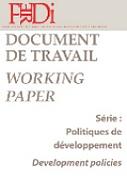

The 2015 Addis Ababa “Billions to Trillions” initiative called for stepped-up private sector investments and financial flows in developing countries. But instead of closing, the “trillion” dollar gap between development and climate needs, and and the actual flows continues to widen. Was it a fairy tale? What is certain is that the current operating model of the aid agencies and the development finance institutions, is not helping to crowd-in private flows at the necessary scale. The paper reviews the evidence and highlights what needs to change and how to do it. Since the devil is in the details and the true test is implementation, the review is based on the preliminary lessons of the real-life experiment at IFC (“IFC3.0”) launched in late 2016. The key finding is that despite some progress, more needs to be done for IFC 3.0 to deliver at scale, especially in the poorest countries. The private sector side of the WBG, i.e., IFC and MIGA, must continue to shift from a reactive to a proactive approach to creating markets and project development; and the public side, i.e., IBRD and IDA, must act in a complementary manner, embracing the private sector strategically and operationally as a key development agent. The paper concludes with detailed and concrete recommendations for what could be done rapidly. We call it WBG 3.0.
The authors thank Edouard Mien (FERDI) for his Excellent research support.
Le Houérou P., Lankes H.P. (2023) "Mustering the private sector for development and climate in the Global South – Is it realistic? Lessons and recommendations from an on-going experiment at the World Bank Group", FERDI Working paper P323, May 7.

